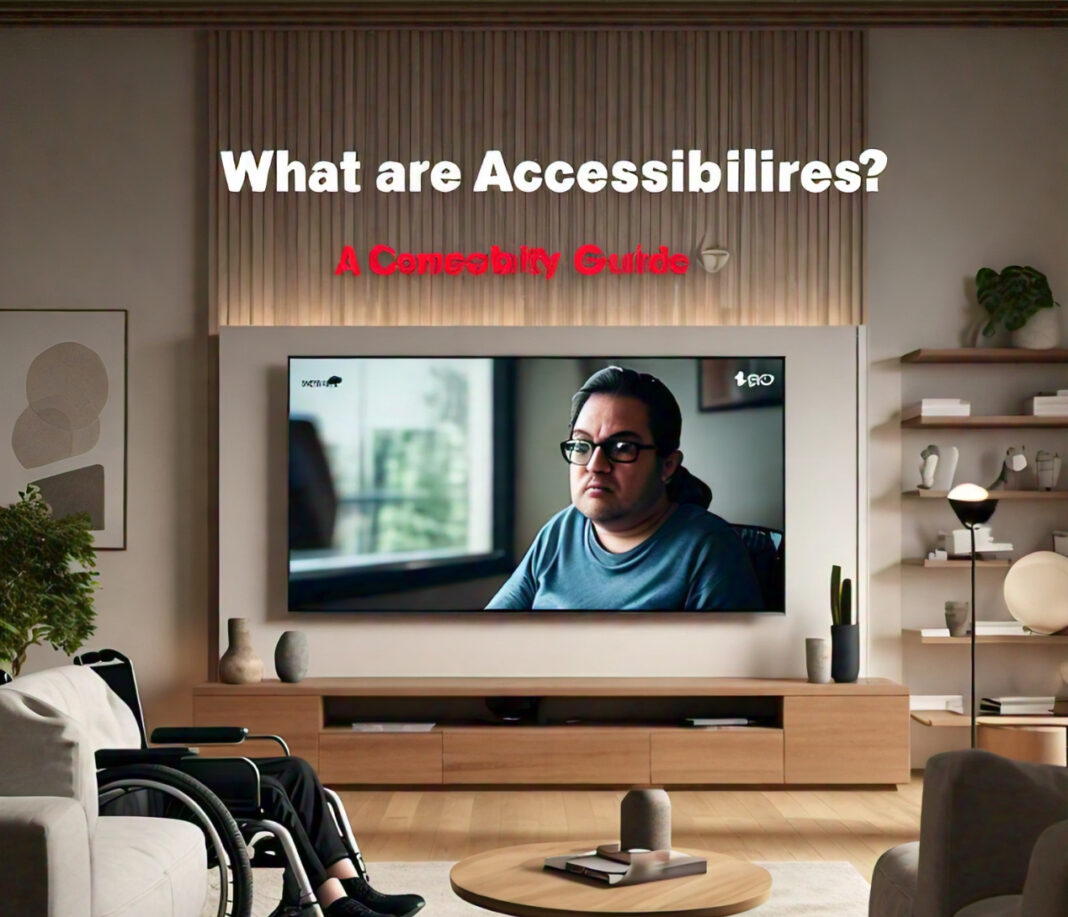Today, technology has indeed encompassed a vital aspect of modern life. From smartphones to computers, websites, and apps, numerous digital platforms are being used by all of us in every second of our lives. Not everyone, however, can easily access these technologies. This is where accessibility features come into play. But what exactly are accessibility features, and why is it such a crucial feature?

Accessibility features are design elements and functionalities in devices, software, and websites that enable their use by persons with a wide range of disabilities or limitations. Such features remove the barriers to access to digital technologies for all people, whether they can use them.
This comprehensive tutorial will look at the world of accessibility features, their importance, and their benefits not only to people with some kind of disability but indeed to all users of technology. We shall delve deep into the different types of accessibility features, their applications, and what impact they have in creating a more inclusive digital landscape.
Definition and Purpose
Accessibility features are tools, settings, or design elements that make digital content and devices more usable to people with disabilities, or those who otherwise face challenges in using standard interfaces. Generally speaking, these features exist to make technology inclusive-to be used by as many people as possible regardless of physical or cognitive abilities.
It can be as simple as text size changes or as complex as a screen reader or voice control system. When developers and designers make technology accessible, a huge range of users will be able to finally access information and services as equals.
Features of Accessibility
Accessibility is no longer a good-to-have feature of technology; it is an essential feature of today’s technology. Why does this matter?
- Inclusion: They enable people with disabilities to participate in the digital world fully and access information or services just like any other person.
- Legal Compliance: Most countries have legislation regarding digital accessibility, and hence, these features are requisite for legal compliance.
- Better User Experience: Access features improve user experience for all, not only the disabled, by making interfaces more friendly and versatile.
- Market Expansion: By making products more accessible, businesses can cater to a broader market that includes a substantial number of people with disabilities.
- Social Responsibility: Making products more accessible shows a concern for social equity and inclusion.
Types of Accessibility Features
Accessibility features are different in form. Let’s see some of the most prevalent types:
Visual Accessibility Features
These are features designed to assist users who have visual disabilities or color blindness.
- Screen Readers: Programs that read out text and describe pictures on the screen.
- High Contrast Modes: Settings that increase the contrast between the colors of the text and the background.
- Text-to-Speech: Converting written text to spoken words.
- Zoom and Magnification: Features allowing users to enlarge partial views of the screen or entire interfaces.
- Color Filters: Enhance how people with color blindness can tell the difference between distinct colors.
- Alt Text for Images: Screen readers would be able to read out text descriptions of images.
Auditory Accessibility Features
These functionalities would accommodate users with hearing disabilities:
- Closed Captions: Text versions of spoken videos.
- Visual Alerts: Translates auditory alerts into visual notifications.
- Mono Audio: Merges stereo audio channels into one, which is beneficial for users with hearing loss in one ear.
- Sign Language Interpretation: Provides the interpretation in sign language for audio.
Motor Accessibility Features
These are features intended for users with mobility impairments or limited dexterity:
- Voice Control: This feature enables users to control devices using their voice.
- Switch Access: It provides navigation by external switches or the device’s buttons.
- Sticky Keys: Pressing keys one after another instead of simultaneously for keyboard shortcuts.
- On-Screen Keyboards: It provides virtual keyboards for users who cannot use physical keyboards.
- Predictive Text: Suggests words to minimize the number of keystrokes a user needs to perform.
Cognitive Accessibility Features
These serve to aid individuals with cognitive impairment or learning disabilities. Some of the features include:
- Simplified Interfaces: It reduces clutter and complexities in user interfaces.
- Reading Assistance: Features meant to help with text comprehension such as text-to-speech or the one highlighting text.
- Focus Modes: Reduce distractions by limiting notifications or other visible elements.
- Memory Aids: These may include features allowing reminders and task lists that help a user in managing their schedule.
Accessibility Features in Different Platforms
Mobile Devices
Smartphones and tablets are no longer a luxury but an amenity in our lives. Here are a few common accessibility features in mobile operating systems:
- VoiceOver in iOS and TalkBack in Android: These are screen readers, which provide spoken feedback.
- Dynamic Type: Users can choose the size of text in all the applications.
- Assistive Touch: An on-screen menu for device controls.
- Dictation: It speaks text spoken to convert it into words.
- Guided Access: Constrain the device to a single app, useful for focusing and parental controls.
Desktop Operating Systems
Desktop computers are widely equipped with accessibility features such as:
- Narrator (Windows) and VoiceOver (macOS): Screen readers included.
- Magnifier: Zoom in on parts of your screen.
- Speech Recognition: Control of computer by voice.
- Keyboard Shortcuts: assignable shortcuts for quicker navigation.
- Colorblind Modes: changing color schemes to help differentiate colors better.
Web Browsers
Accessibility Features of Modern Web Browsers
Modern web browsers offer a host of functionality to make the internet more accessible. Specifically:
- Reader Mode: Automatically cleans up the web page to make it easier on the eyes.
- Zoom: Allows access to magnifying web content.
- Font Customization: The user can customize font styles and sizes.
- Extensions: Third-party add-ons that offer additional accessibility functions.
Accessible Design
Design Considerations
The following are considerations when designing accessible products for all users:
- Perceivable: It must be possible to present information in ways that all users can perceive.
- Operable: The user interface components shall be operable by all users.
- Understandable: Information and operation shall be understandable to all users.
- Robust: The content shall be interpretable by a wide range of user agents, including assistive technologies.
Development Best Practices
Following are the best practices developers should follow:
- Semantic HTML: Proper use of HTML elements makes it easier for screen readers to understand the content.
- Alt Text: All images and other non-text elements that contain information should have alternative text.
- Keyboard-Navigation: By default, all functionality should be keyboard-navigable.
- ARIA Attributes: The use of ARIA attributes in enhancing the accessibility of web applications.
- Testing with Assistive Technologies: Products should be regularly tested with screen readers and other assistive technologies.
Business Benefits of Incorporating Accessibility Features
Benefits for People with Disabilities
Accessibility features have much more important implications for users with disabilities, including:
- Autonomy: they make it possible for them to use technology independently without resorting to intermediaries.
- Equal Access: they give the chance to access the same information and services that people without disabilities take for granted.
- Better Quality of Life: they allow users to be fully engaged in every aspect of digital life-from educational to entertainment activities.
- Job Opportunities: they enable users to handle technology at work, making certain jobs accessible.
Universal Design Benefits
Accessibility features often prove to be useful in situations for all users, including those without disabilities:
- Situational Disabilities: Features like voice control come in handy when hands are full or busy.
- Aging Population: As the general population gets older, features created to deal with certain kinds of disabilities become useful.
- Improved Usability: Clear navigation and many other accessibility features are beneficial for all users.
- Multilingual Support: Text-to-speech features assist language learners.
Future of Accessibility Features
The development of features of accessibility also evolved with technology. Following are some of the exciting developments:
- Artificial Intelligence: AI is being used to develop features for image recognition and natural language processing.
- Virtual and Augmented Reality: New interfaces are being developed to make VR and AR accessible.
- Brain-Computer Interfaces: This emerging technology allows users to directly control devices through brain signals.
- Personalized Accessibility: Machine learning can also help your devices automatically adjust themselves as per the individual user’s requirements.
- IoT: As devices are increasingly connected, accessibility features will spread beyond smart homes to smart cities.
Challenges in Providing Accessibility Features
Much as improvements are being made, challenges persist:
- Cost: For the developers, creating comprehensive accessibility features can be expensive.
- Awareness: Many developers and companies are not even aware of the importance of this aspect.
- Complexity: Some features are quite complicated to implement, especially in legacy systems.
- Rapid Technological Change: Keeping up the accessibility features with evolving technology can be quite a challenge.
- Standardization: Lack of universal standards may result in inconsistent implementation across systems.
Conclusion
Accessibility features are not add-ons or nice-to-have but core elements to ensure digital inclusion and equal access for every group of users.






